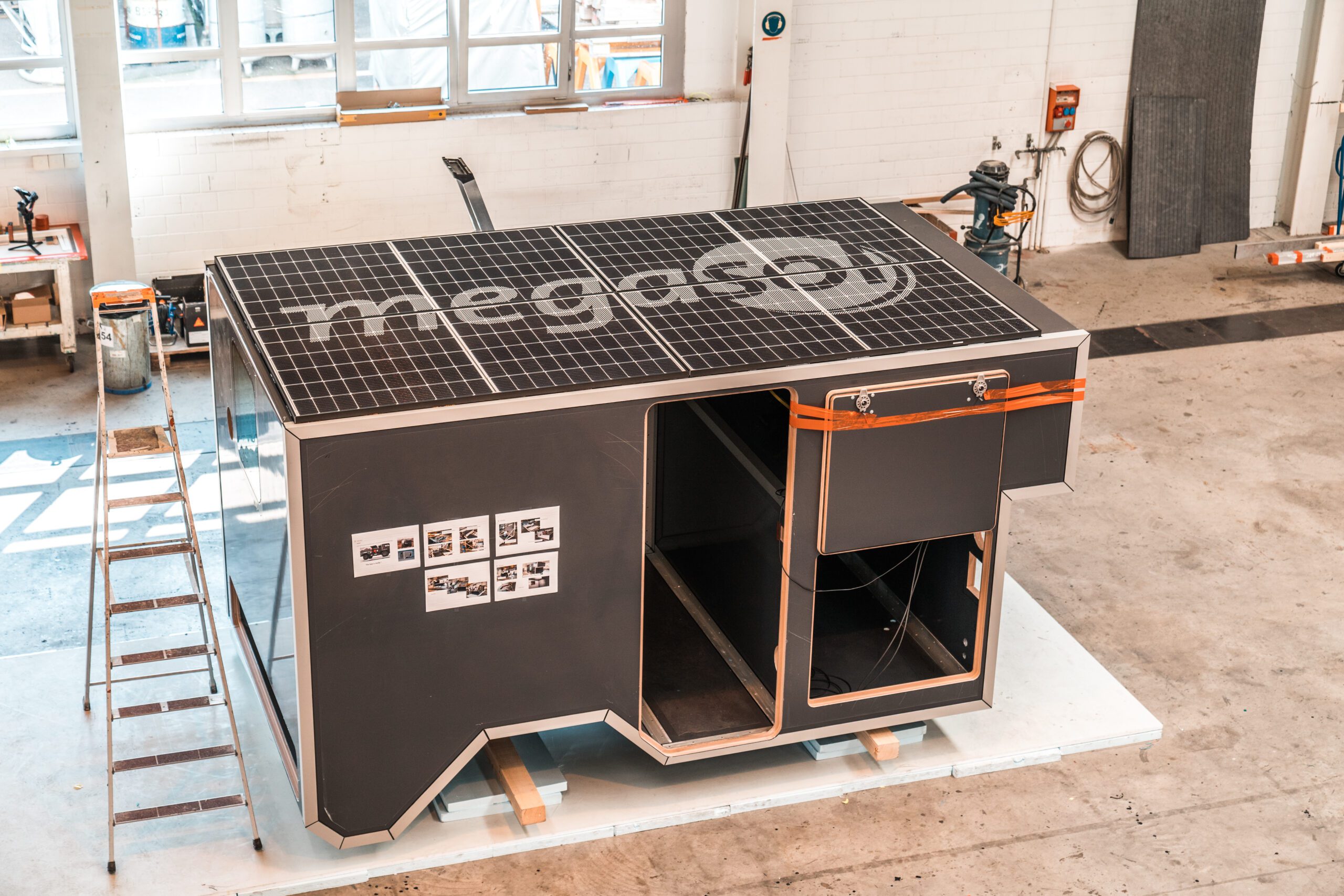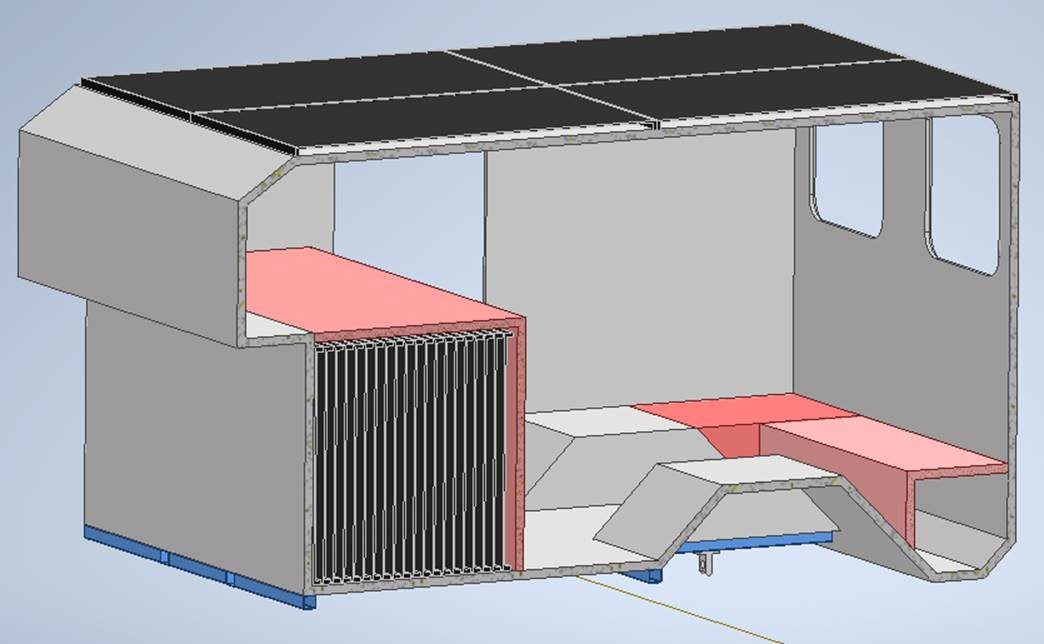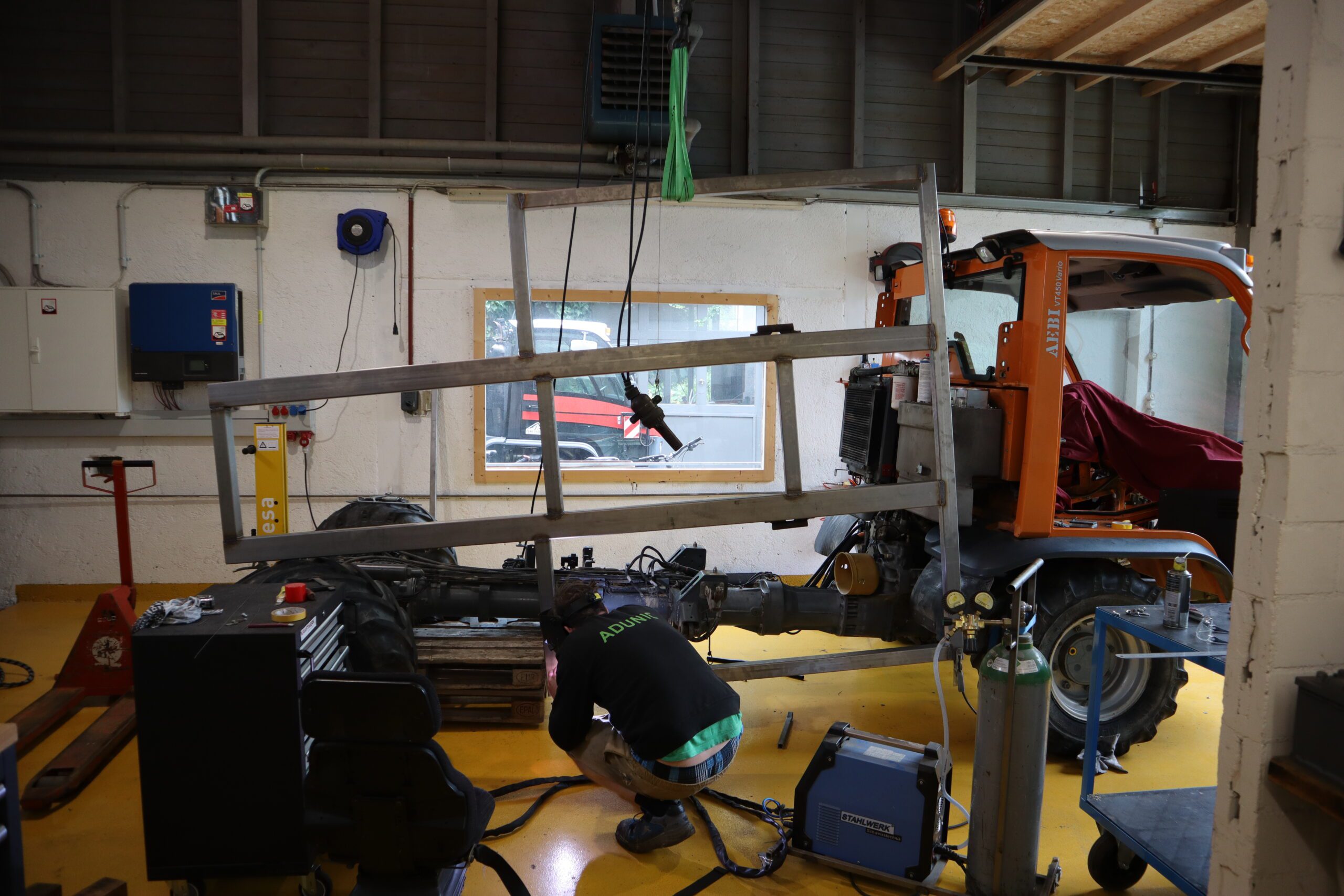It was obvious from the start, that we needed a lot of storage room on our Expedition. Ojos del Salado lies about 350km away from Civilisation in the Atacama Desert and we will have to bring all necessary spare parts as well as food and water for the whole crew fort about three weeks, which adds up to a lot of material. The expedition vehicle “Terren” is a commercial transport Vehicle with a load capacity of 6500kg and there is a quick-change mechanism for the cargo areat hat allows the user to change whatever application he is using within minutes. This was a perfect starting point to let our fantasy run free about what we could build in the back.
We created a list of criteria the storage compartment had to fulfil:
– It has to be lightweight. Even if Terren has a lot of power, it is easier to climb the mountain with less weight
– It must be very stiff and sturdy. Ther’s a lot of weight in the box and in will be shaken violently while we drive it over rough terrain, and it must withstand this
-It needs to be insulated very well so it can give us shelter in cold and bad weather
-There must be solar panels on the roof that charge while we are driving
-There hast to be a practical storage for the rest of the solar panels with an easy deploy mechanism
With regards to these points we created some ideas. The most obvious ones involved either a steel frame structure with attached wall panels or a self-carrying box made of sandwich composite material.
Either way, while planning the options into more detail, it became clear that it was going to be a LOT of work.
And we were already completely absorbed with the design and construction of Terren! So we needed some help.
From his time in Construction project management, David Pröschel knew the Swiss company Sika very well. They are specialised in adhesive bonding solutions and the have an automotive branch which offers quicker and cheaper options for vehicle construction than welding and bolting.
He contacted David Tobler, Head of transportation at Sika, who was immediately intrigued about Peak Evolution, and he had just the right technology to meet our needs.
While Sika offers the structural boding solutions ant the planning, they don’t manufacture the structures themselves. They set us up with one of their customers 3A Composites Mobility, another Swiss company that is specialised in the construction of Sandwich composite materials and complete sections of buses and trains.
Sika and 3A Composites agreed to completely sponsor the construction of our Cargo Box! This was an important milestone for us, as it took months of work off our shoulders and also we could hand over the responsibility for the structural integrity over to absolute professionals. All we had to do now, were the design choices. This was still a big enough challenge!
We started out with simple and quick sketches, outlining the maximum outside dimensions of the box and some suggestions for the interior.
From there on we refined the design in regular meetings with our new partners.
Once we settled on a final design, Sika ran a Simulation how the box would behave in the expected conditions to make sure it can cope with all the forces.
We designed and welded the stainless steel subframe that was compatible with the quick-change system of our “Terren” truck. We brought it to 3A composites to Altenrhein to continue construction. There the steel frame was treated with a Sika primer to prepare it for the bonding with The Sandwich composite Box.
From there on 3A composites took over the lead in the manufacturing process. We had predefined the locations of all the light switches, solar power cables and lighting so the sandwich panels could be manufactured with all the electrical lines and metal inserts already in place.
Once all the parts were CNC cut, we could start bonding them together. A very experienced crew from 3A composites was in charge of putting the panels in the right position. An application techinica from Sika was there to apply all the specific products in the right place. Finally the entire Box is held together only by structural bonding.
We then added the doors and flaps and finally glued the solar panels on the roof as part of our 32 square meter solar power plant. The steps that are missing now are the power electronics for the solar charging system, the interior design and the wrapping with the distinct PEAK EVOLUTION livery.
We can’t wait to drive the finished truck to 3A Composites and pick up the Box!














